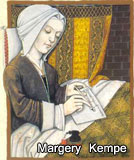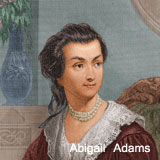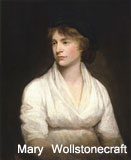"A memoir is literally the story your memory tells you." (Tobias Wolff)
The memoir is an ancient form. One of the earliest memoirs was written in 50 BC by Julius Caesar, who described his war campaigns in Commentaries. Later, St. Augustine recorded his Confessions in AD 397-8. In the 12th century, the French monk Peter Abelard writes of his sufferings, including his castration, in Historia Calamitatum. In the 15th century, Margery Kempe wrote her Book of Margery Kempe, detailing her religious conversion and its effect on her life. There were many more very early memoirs, but they were lost in the centuries of war and the library burnings of various religious upheavals.
The 16th and 17th centuries produced a wave of memoirs from explorers, adventurers, and colonists as the New World began to be explored and settled. Bernal Diaz del Castillo (1496-1584) was a member of the Cortez expedition and chronicled the conquering of the Aztecs in his History of the Conquest in 1552-1557. Francisco (Alonso) de Aguilar (1479-1572) was also a member of the Cortez expedition. His memoir, Historia de La Nueva Espana, describes what he saw and his experiences guarding Montezuma. Many memoirs of the time were written in the form of letters and diaries. These were documents which were meant to be read, rather than personal letters or journals which would be kept private. Columbus, for example, kept a diary of his explorations, knowing he'd have to present it to the King and Queen when he returned to justify the expense of his voyage and to justify future voyages.
Memoirs began originating in the New World, too, at this time. One of the most famous was Mary Rowlandson's A Narrative of the Captivity and Restoration of Mrs. Mary Rowlandson, which tells the story of her capture by Native Americans in Massachusetts during King Philip's War and describes her 11 weeks of captivity. William Moultrie wrote Memoirs of the American Revolution, describing his own experiences serving as a major-general in the Revolutionary Army. Meriwether Lewis and William Clark kept meticulous journals of their exploration of the western territories. And later, there were Gold Rush memoirs from California and Alaska: The Discovery of Gold in California, by John Sutter; Louise Amelia Knapp Smith Clapp's Shirley Letters; and William Haskell's Two Years in the Klondike Gold Fields, among many others.
The 20th century brought an even larger flood of memoirs, from Vera Brittain's account of her experiences as a British nurse during World War I, Testament of Youth, to Mildred Armstrong Kalish's Little Heathens: Hard Times and High Spirits on an Iowa Farm During the Great Depression, to Maxine Hong Kingston's account of growing up Asian-American, The Woman Warrior: Memoirs of a Girlhood Among Ghosts, to Doris Kearns Goodwin's account of her childhood against the motif of baseball, Wait Till Next Year: A Memoir.
The memoir bears a close relationship to both autobiography and fiction. An autobiography is typically an account of the full life of a person (at least, up to the point when the autobiography is written). The autobiographer makes an attempt to be historically accurate, and includes dates, names, places, and other verifiable facts.
A memoir, by contrast, may cover just a period of a person's life, and is based on memory rather than on fact. It attempts to explain that part of the writer's life in emotional terms, rather than strictly factual ones. Stella Suberman says, of writing her memoir, The Jew Store, that "writing a memoir was so much like writing a novel, it was hard to tell the difference...all those elements I had thought the sole obligations of the novel were also de riguer for the memoir." A memoir is not just a dry recitation of facts; it must have a voice with which the reader can identify, and the narrator must stay "in character" throughout. A memoir must also have "characters" who, whether they are good or bad, stay in character. And, just as in a novel, there must be a clear climax, and everything in the memoir must build toward it.
Real life, of course, seldom has such a clear shape. Thus, a memoirist must make decisions about what events to bring in and leave out, and what characters to bring in and leave out. Suberman says, "Once I had decided what the climax would be, I used only those items that wouldn't divert or lead to digressions. To do this I avoided bringing in 'real' events just because they actually happened." She even dropped one of her sisters from the story altogether. "In the end, your real loyalty is to the targeted truth, not to strict facts."
Of course, when a reader picks up a book labeled "A Memoir," he has the expectation that he will be reading the truth. And there have been several scandals in recent years in which it was discovered that writers made up large portions of their memoirs: James Frey's A Million Little Pieces,, for example, or Danny Santiago's Famous All Over Town (Danny Santiago, who presented himself in his memoir as an East L.A. gangbanger, turned out to be Daniel James, a 70-something screenwriter).
But for the most part, a memoir is a remembrance of a person's life and an attempt to give it shape and meaning.
If you'd like more information on any of the topics covered in this lecture, go to the Links page. Enjoy!
Some of the information in this lecture derives from:
1. Wolff, Tobias, and Elizabeth Glass. "Mastering the Memoir: Tobias Wolff." Writer's Digest (July 1997): 25-27.
2. O'Brien, Sharon. "A short reflection on teaching memoir and oral history." The Oral History Review 25.1-2 (1998): 113+.
3. Liebetrau, Eric. "Song of myself, sung again and again." The Wilson Quarterly 34.1 (2010): 105+.
4. Suberman, Stella. "The Art of Memoir." South Atlantic Review 70.2 (Spring 2005): 11-19.


